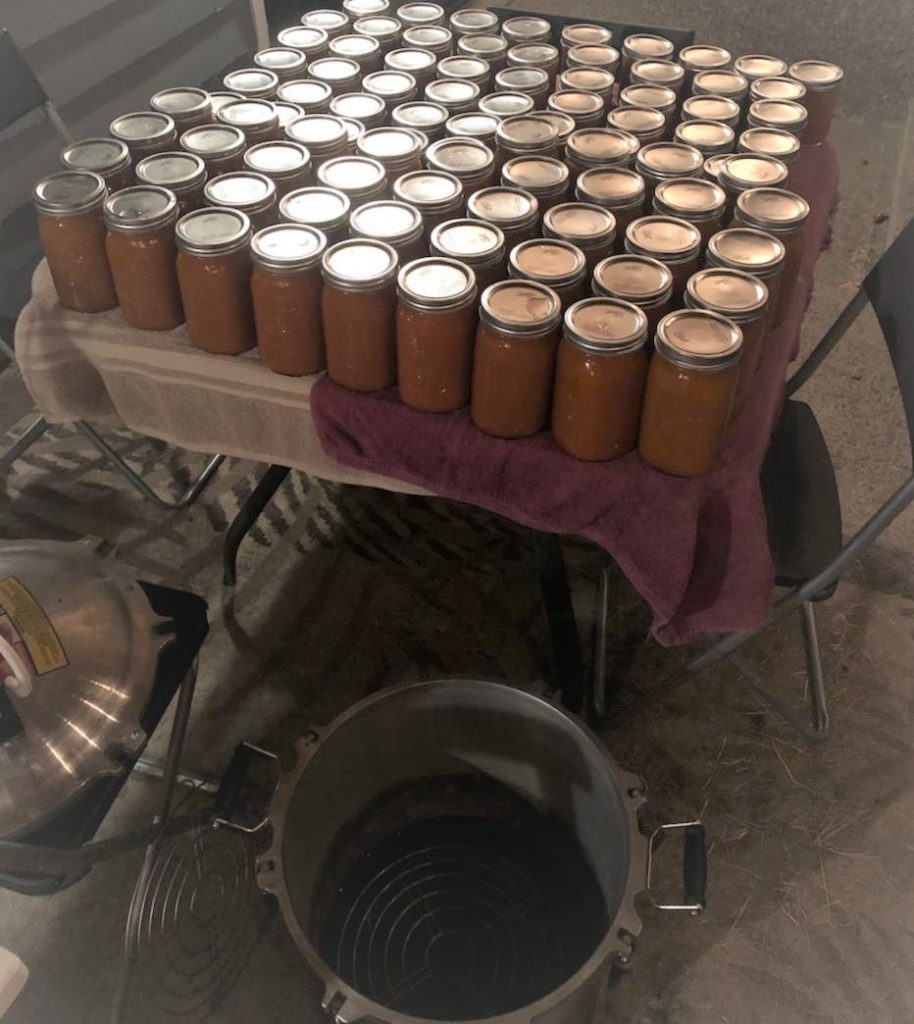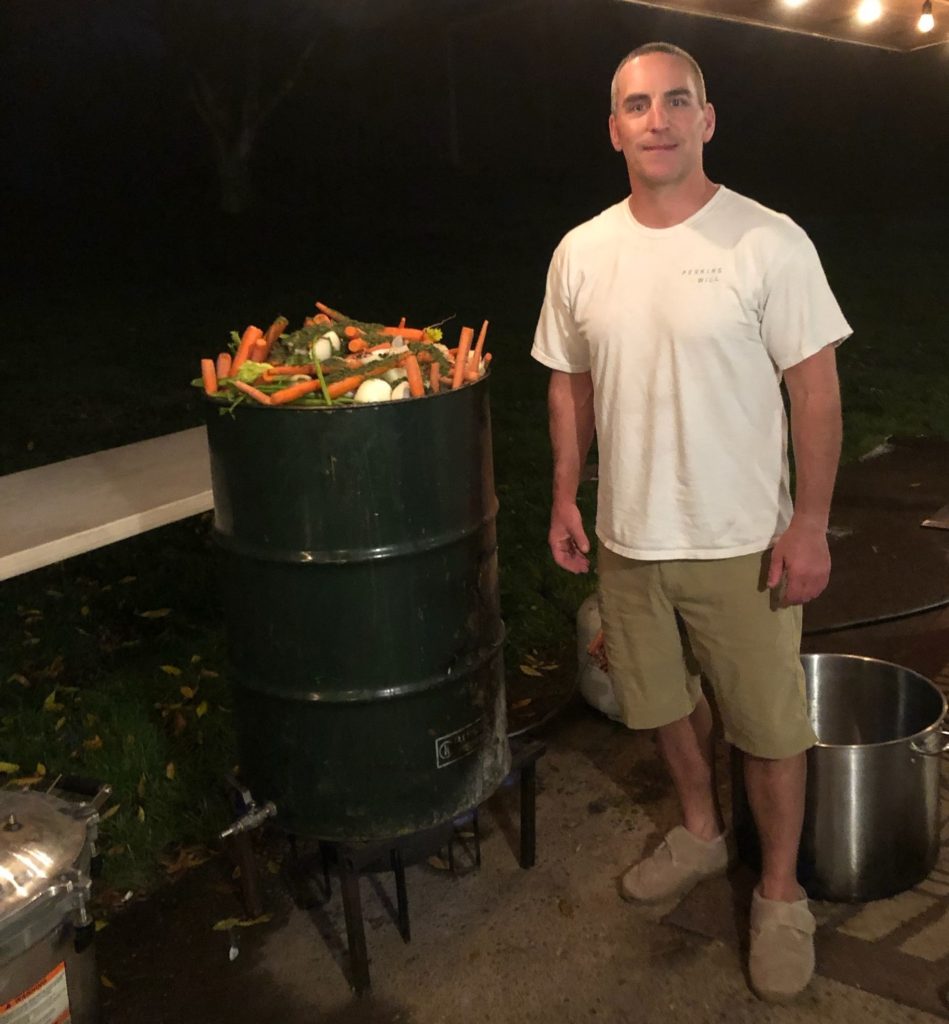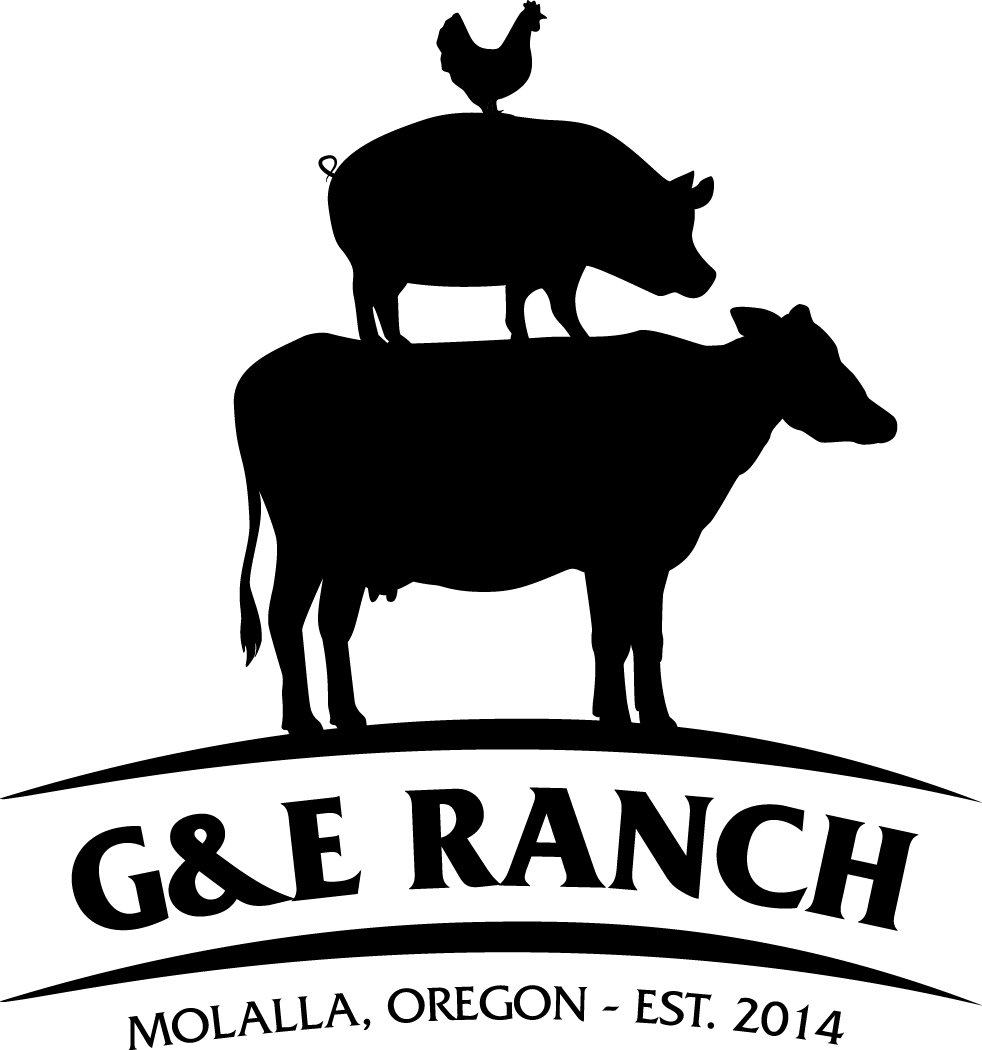What do you think of when you think of canning? Do you think of your grandma slaving in the kitchen for hours making a dozen pints of green beans? Do you think of water bath canning or pressure canning? Does it seem intimidating, or does pressure canning seem scary? Do you think of canning small batches or big batches? Well, those types of questions are all normal and get all kinds of responses. Around the farm, when it comes time to can, we CAN. Go big or go home type of thing. We focus on higher volume and productivity using fresh produce and meat from the farm. We typically pressure can most of our products using an All American 41-1/2-Quart Pressure Cooker. It’s the biggest they make, and we love it. It has the capacity to can over 20 quarts or 64 ½-pints at a time.
By using that, we can be efficient with time and do large batches. Pressure canners are used on low-acid foods such as meats, fish, vegetables, and mixed recipes. We do occasionally use a water bath canner for things such as preserves and pickles that are acidic.
Just to give you an idea of some things we have canned over the last 5 years, here is a list:
- Bone Broth
- Rendered lard
- Chili
- Squash
- Pickled chicken & duck eggs
- Tuna (straight off the boat & delivered to the Ranch whole & on ice)
- Tomato sauce
- Tomato soup
- Ketchup
- Split pea soup
- Beans
- Salsa
- Jalapeños
- Jambalaya
- Chicken
- Chicken soup
- Cucumbers

When canning, it can get messy, so we do as much of it as possible on the back covered porch. We typically use multiple propane high-capacity cookers, and for fun, we have used our Silver Fire Hunter Stove. This is an extremely efficient stove that burns wood debris. It is part of our prepper stuff, so if the big Pacific NW earthquake comes or worse, we are ready to can off-grid without electricity or fossil fuels. We also have additional stock of empty jars and lots of spare lids on hand. If need be, we could potentially can/preserve much of the frozen food we have in our freezers. Electrical power would need to be lost, and all gasoline and propane on hand and in the vicinity would need to be exhausted. We highly doubt this would ever happen, but we are marginally prepared for it.
When canning, we only use wide mouth jars. They make things mush easier. The only things that are OK using small-mouth jars are liquids like jams, ketchup, or bone broth. They are challenging to use with larger items like tuna, tomatoes, or eggs. Since jars are reusable, we spend the few cents more per jar and always buy wide-mouth. We are then ready for anything.
When it comes to the law, Oregon is very complicated. I imagine all states are. As a general rule, we can’t sell pressure canned products or any canned products with meat. With a special residential kitchen void of house pets, a special license, special labeling, a lot of red tape and a truck full of money, you can sell some canned products with high acidity, but for small health-conscious farmers trying to do good things, the government rules have all but shut it down and left it for big industry. Here at the G&E Ranch, we have an issue with this as we do it correctly and safely according to manufactures instructions and best practices. Generally, that means pressure canning to the right pressure for the right amount of time. The concern is the very rare chance of getting botulism due to improper canning. We recommend the law be changed to allow for home pressure-canning as long as those people that are canning be adequately trained, certified and licensed and then properly label the products. After Greg met multiple times with USDA and the Oregon Department of Agriculture, it became very apparent that these people are controlled by big agriculture and are unwilling and incapable of helping small farmers with amazing healthy products and good intentions. If you would like to hear a more colorful version of Greg’s opinion about these agencies and their people, feel free to reach out to him directly.

Canning is only one form of preserving food. Freezing, drying, curing, fermenting, salting, and cold storage are other methods. For us, freezing and canning is preferred.
This is just a glimpse into canning. As we can different products this season, we will bring you details and recipes.
(This Post contains affiliate links)

Recent Comments